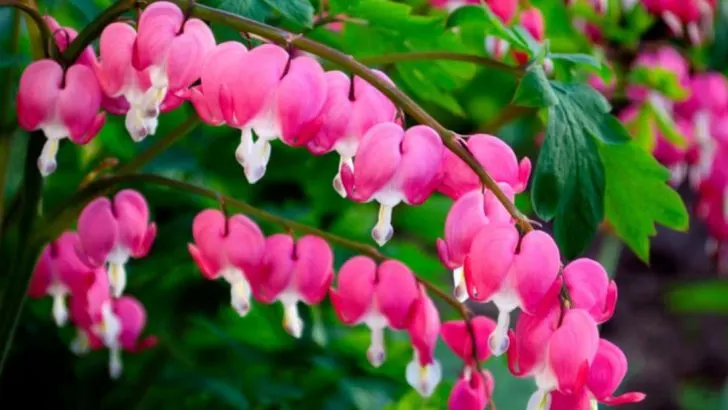The area beneath trees can often be tricky to plant due to shade and competition for nutrients. However, these 24 plants are perfect for filling in those spaces, adding texture, color, and life to otherwise bare ground.
Hosta
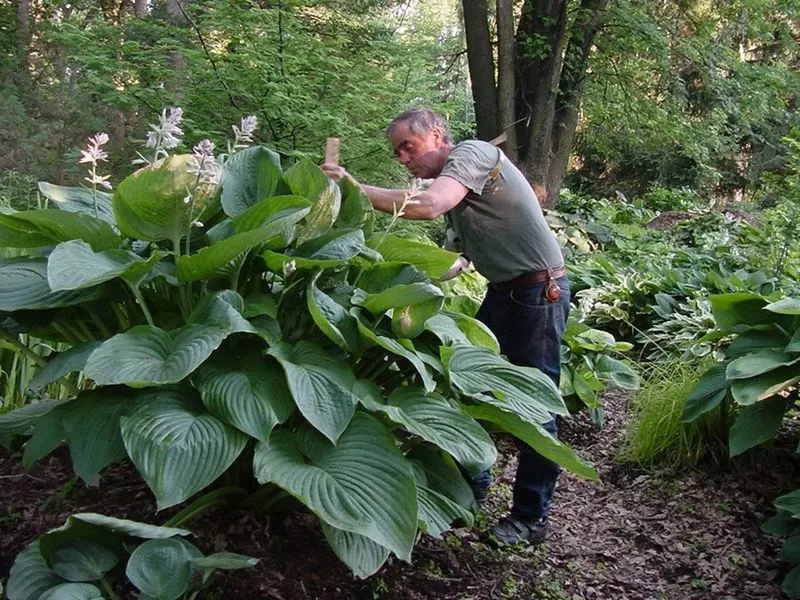
With broad, striking leaves, hostas bring texture and color to the shaded spots beneath trees. These perennials thrive in partial shade, making them ideal for such locations. Ranging from deep green to variegated patterns, hostas offer a palette of options for gardeners. Manageable growth habits ensure they won’t overwhelm nearby plants. To maintain their beauty, keep an eye on slugs, which are particularly fond of hostas. Consider placing slug deterrents nearby. Hostas are also easy to divide, providing an opportunity for expansion and sharing with fellow gardeners.
Ferns
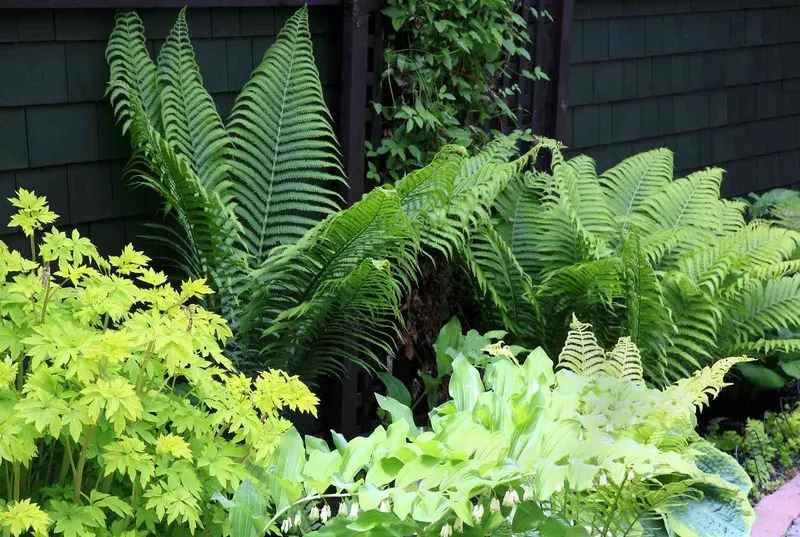
Ferns bring a soft, arching beauty to shaded areas, with their delicate fronds creating a serene atmosphere. These plants thrive in the rich, moist soil often found beneath trees. Their ability to spread via underground rhizomes makes them excellent ground covers. Choose from a variety of species, such as the classic Boston fern or the elegant lady fern, each offering unique textures. While ferns require consistent moisture, they are relatively low-maintenance. Their resilience makes them a popular choice for creating a woodland garden feel.
Astilbe
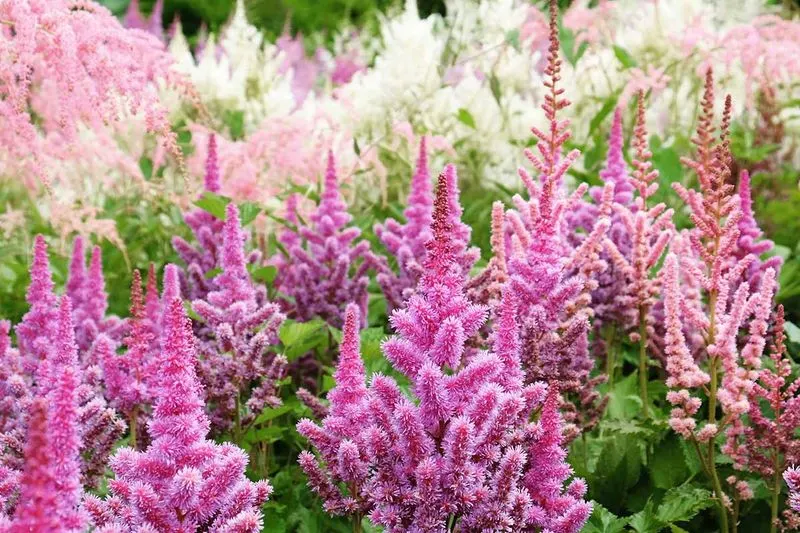
Astilbe offers bright plumes of color that stand out in shady garden spots. This perennial is known for its feathery flowers that bloom in rich shades of pink, red, and white. Preferring moist, well-drained soil, astilbe thrives under trees where sunlight filters through. Their vivid blooms attract pollinators like bees and butterflies, adding life to the garden. Regular watering ensures they stay vibrant, especially during dry spells. With a variety of heights available, astilbe can be used as a backdrop or a focal point in your garden design.
Heuchera
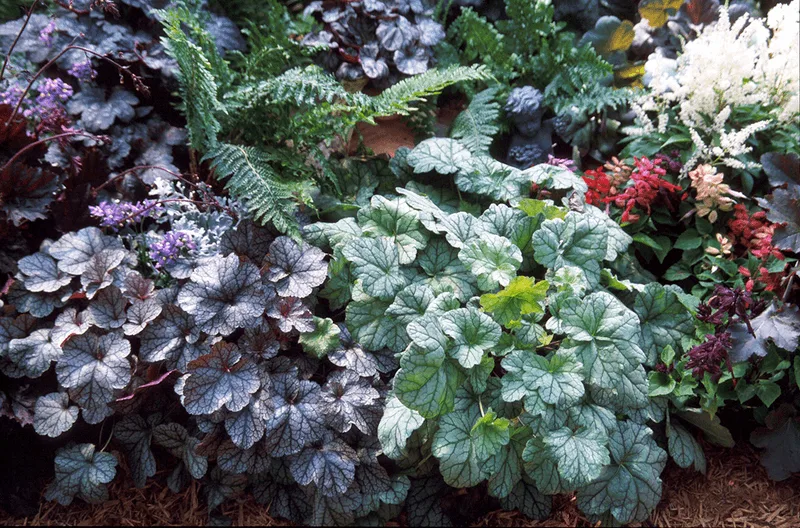
Heuchera, also known as coral bells, showcases an array of leaf colors from deep burgundy to lime green. These plants thrive in partial to full shade, making them perfect companions for trees. Their small flower spikes, though subtle, attract pollinators like hummingbirds. Heuchera prefers well-draining soil and appreciates occasional mulching to retain moisture. A versatile plant, it can be used to edge borders or fill containers. With its striking foliage, heuchera adds year-round interest to any shaded garden area.
Lungwort
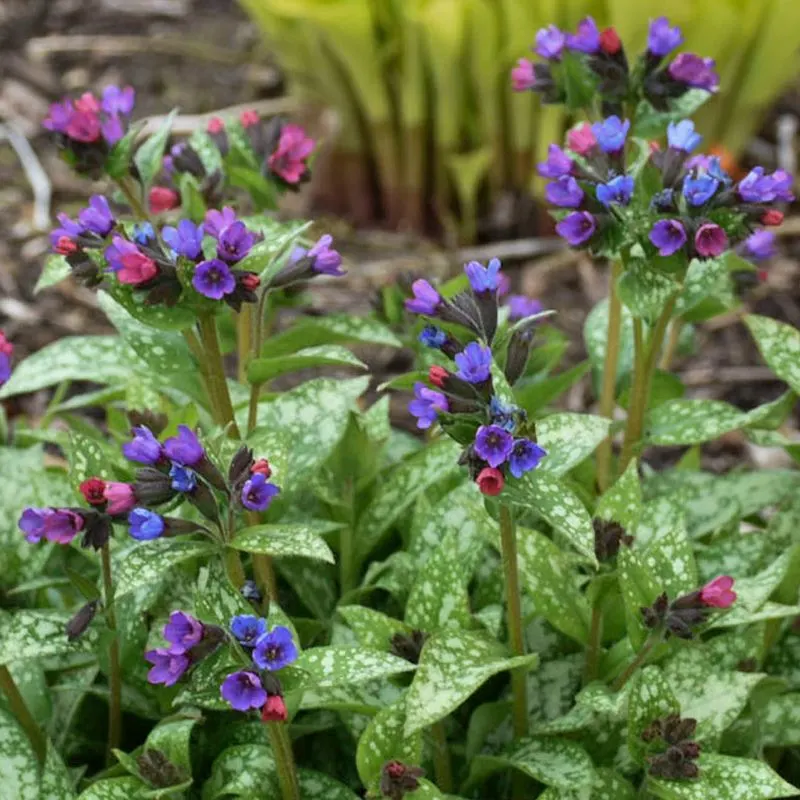
Lungwort is cherished for its unique, speckled leaves and charming flowers, which transition from pink to blue. This plant flourishes in shaded spots with rich, moist soil, often found under trees. Lungwort’s foliage remains attractive throughout the year, providing seasonal continuity. During spring, it produces clusters of petite blooms, attracting early pollinators. Keep the soil consistently moist to ensure its lush appearance. Lungwort’s compact growth makes it an ideal ground cover, helping to suppress weeds effectively.
Brunnera
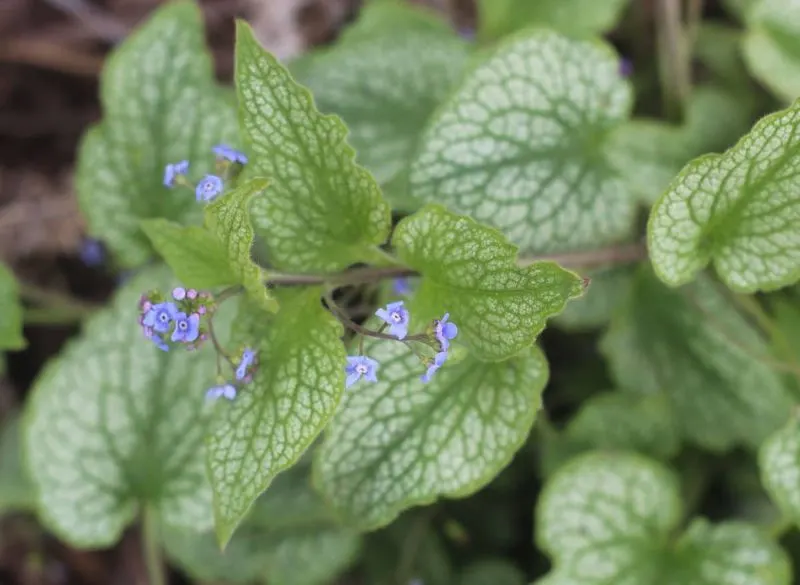
Brunnera stands out with its heart-shaped leaves, often adorned with silver patterns that catch the eye. This plant thrives in shady areas with well-drained soil, making it a charming addition beneath trees. In spring, brunnera produces clusters of small, forget-me-not-like blue flowers, enhancing its allure. Regular watering helps maintain its lush foliage. Use brunnera as ground cover or in border plantings, where its foliage can provide a striking contrast. Its ability to brighten up shaded spots has made it a gardener’s favorite.
Solomon’s Seal
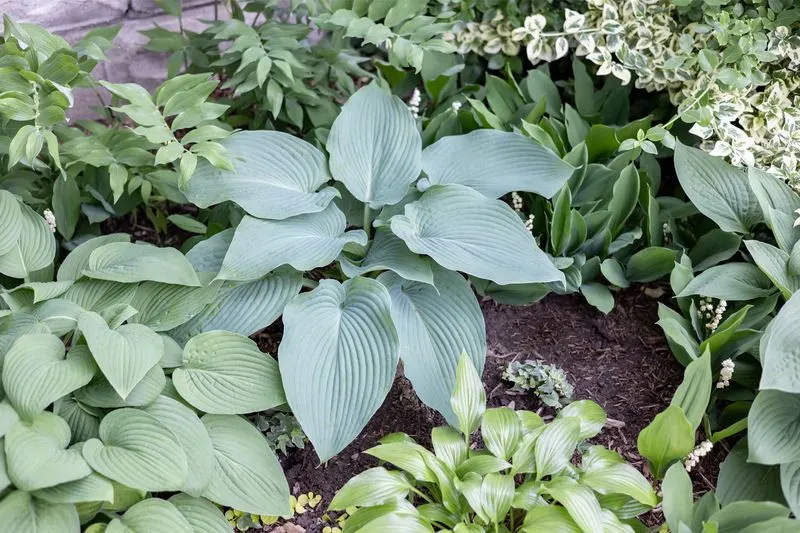
Solomon’s Seal captivates with its graceful, arching stems and white, bell-shaped flowers that dangle delicately. Preferring shaded, woodland-like settings, this plant thrives beneath trees. Its foliage transitions to a golden hue in the fall, offering seasonal interest. Solomon’s Seal spreads slowly via rhizomes, forming neat clumps that require minimal maintenance. Adequate moisture ensures their continued health, but they can tolerate brief dry spells. Their understated elegance makes Solomon’s Seal a sophisticated choice for adding vertical interest to shaded gardens.
Tiarella
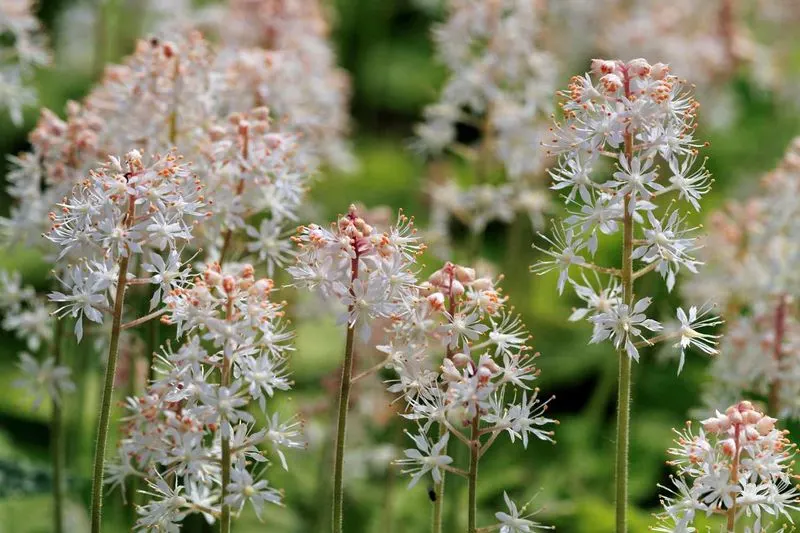
Tiarella, or foam flower, is admired for its deeply lobed leaves and delicate, fluffy white blooms. It thrives in the dappled shade beneath trees, where it adds a whimsical touch. This plant prefers moist, well-drained soil and tends to form dense mats, making it an effective ground cover. Its foliage often boasts interesting patterns, adding visual texture even when not in bloom. Regular watering is key to maintaining its vigor. Tiarella’s natural charm makes it a delightful addition to woodland-style gardens.
Pulmonaria
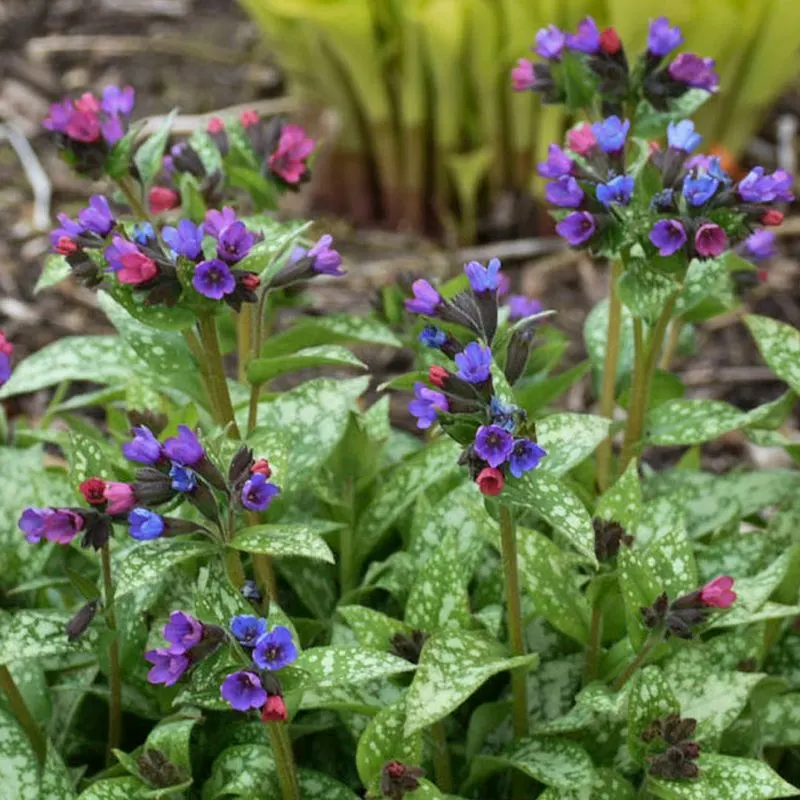
Pulmonaria, known for its silvery-spotted leaves, adds brightness to shaded areas. Its vibrant pink flowers emerge in early spring, providing a splash of color beneath trees. This plant thrives in cool, shaded environments with moist, well-drained soil. Pulmonaria spreads slowly, creating attractive clumps that suppress weeds. Keep the soil consistently moist and remove old foliage to promote new growth. Its unique appearance and early bloom time make it a valuable asset to shade gardens. Use pulmonaria to enhance the visual appeal of your tree-filled landscape.
Epimedium
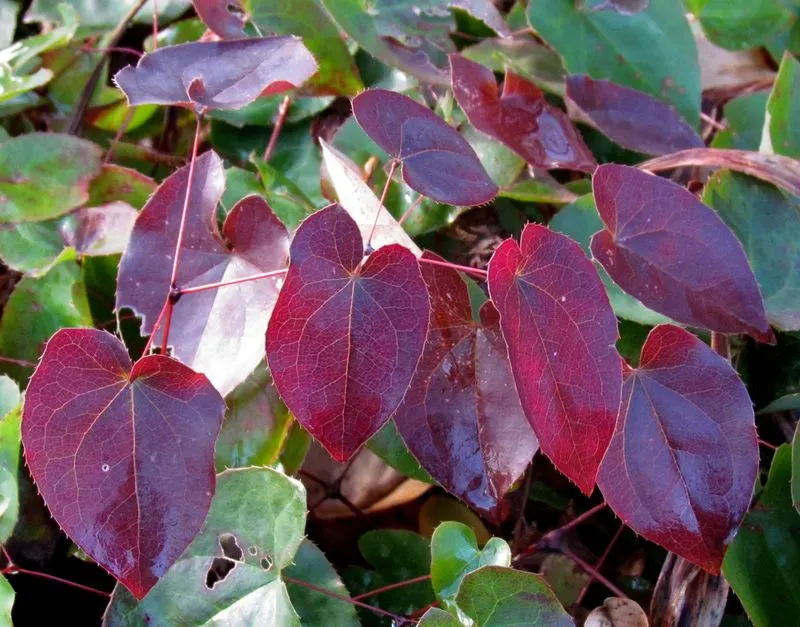
Epimedium, often called barrenwort, enchants with its heart-shaped leaves and dainty, spurred flowers. This plant thrives in the filtered shade under trees, where it can spread to form a lush ground cover. Its leaves often have a reddish tinge in spring, which pairs beautifully with its yellow blooms. Requiring minimal care, epimedium is drought-tolerant once established. Regular pruning of old foliage encourages fresh, vibrant growth. Its resilience and charming appearance make it an ideal choice for low-maintenance, shaded garden areas.
Bleeding Heart
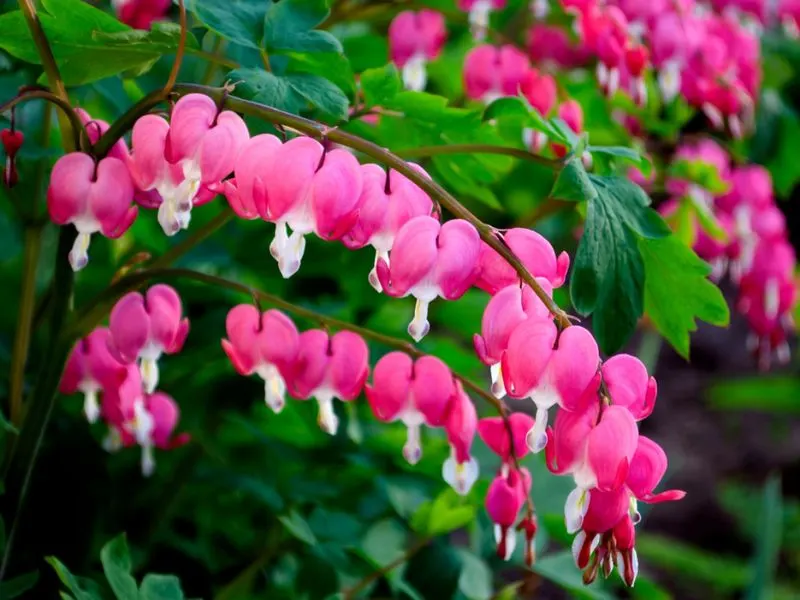
Bleeding Heart captivates with its distinctive heart-shaped flowers that dangle elegantly from arching stems. This plant thrives in partial shade, making it a classic choice for planting beneath trees. Its pink and white blooms appear in late spring, providing a romantic touch to garden spaces. Bleeding Heart prefers well-drained, humus-rich soil and benefits from regular watering during dry periods. After flowering, its foliage may die back, so consider pairing it with later-blooming plants. With its unique blossoms, Bleeding Heart adds a touch of whimsy to shaded gardens.
Bergenia
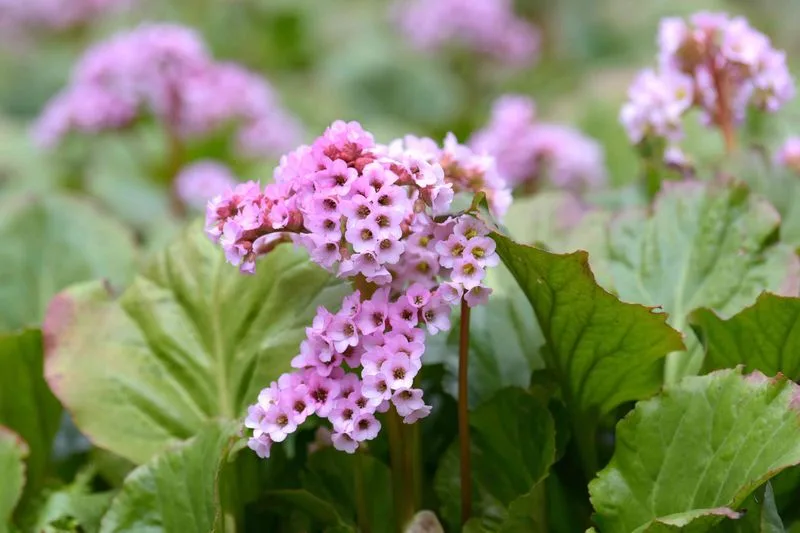
Bergenia, commonly known as pigsqueak, boasts large, glossy leaves that bring a lush texture to shaded areas. In spring, it produces clusters of pink or white flowers that stand tall above the foliage. This plant thrives in partial shade and is tolerant of various soil types. Its leaves often turn red or bronze in colder months, adding seasonal interest. Bergenia’s robust nature makes it a reliable ground cover beneath trees. Regular watering encourages its best growth, but it’s adaptable to occasional dry spells. Bergenia’s evergreen presence offers year-round appeal.
Hellebore
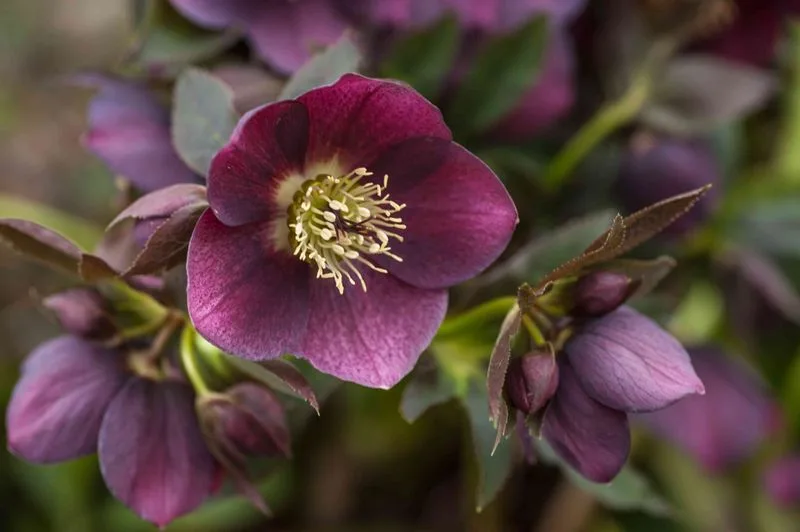
Hellebore, often called the Christmas or Lenten rose, features nodding, cup-shaped flowers that bloom in winter to early spring. Its ability to thrive in shaded, sheltered spots makes it a perfect fit for under-tree planting. These flowers come in diverse colors, from whites to deep purples, providing winter interest. Hellebore prefers well-drained, humus-rich soil and benefits from a protective mulch layer. Once established, it requires minimal care. With its early blooms, hellebore offers a welcome burst of color when most other plants are dormant.
Japanese Forest Grass
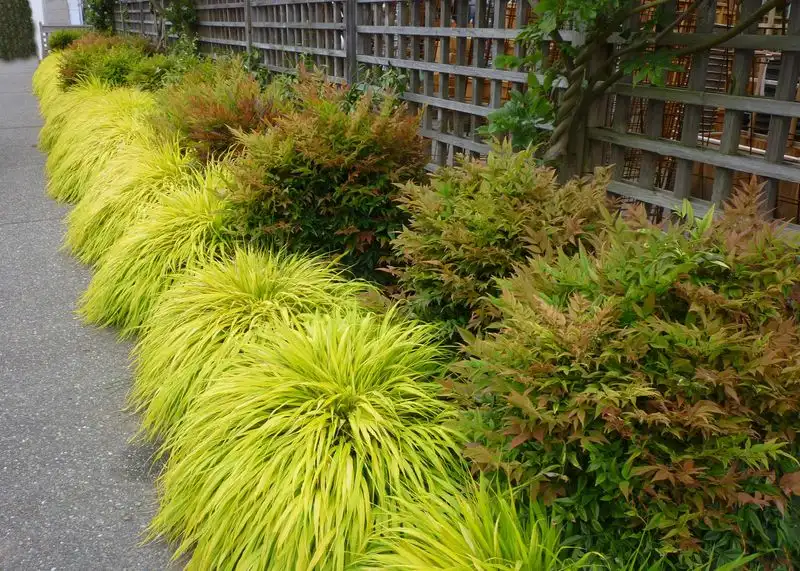
Japanese Forest Grass, or Hakonechloa, adds a graceful, cascading effect to shaded gardens. Its golden foliage brightens dark areas beneath trees, creating a striking visual contrast. Preferring moist, well-drained soil, this grass thrives in partial shade. Its arching habit lends a sense of movement, softening hard edges in garden design. While it grows slowly, patience is rewarded with a dense, flowing clump. Regular watering enhances its best color, particularly in dry spells. Japanese Forest Grass’s subtle elegance complements various garden styles.
Lamium
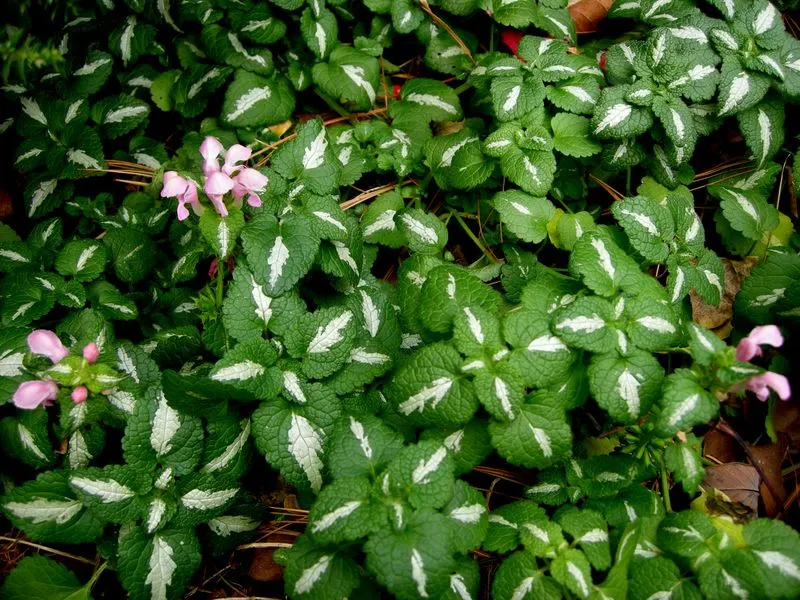
Lamium, also known as deadnettle, is valued for its variegated foliage that brightens shaded areas. This plant thrives beneath trees, where its small purple or pink flowers add pops of color. Lamium spreads quickly, making it an effective ground cover for suppressing weeds. Preferring moist, well-drained soil, it requires minimal care once established. Regular trimming keeps it looking neat and encourages denser growth. Its ability to thrive in poor soil conditions makes lamium a versatile choice for challenging spots under trees.
Vinca Minor
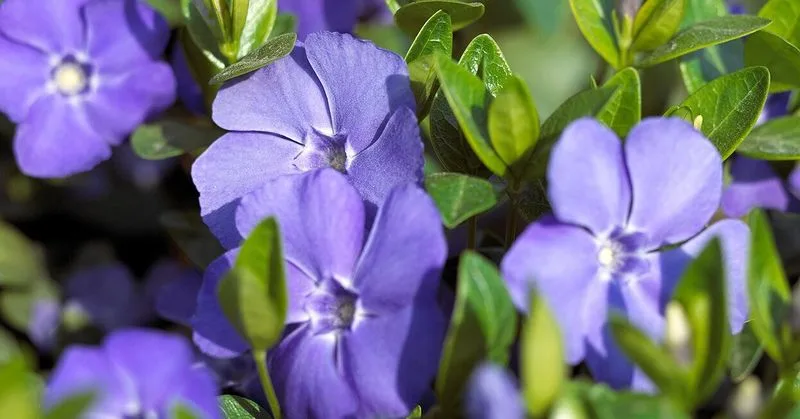
Vinca Minor, known as periwinkle, is a hardy ground cover that thrives in the shade. Its glossy green leaves create a lush carpet, while vibrant blue flowers add seasonal color. This plant spreads quickly, making it ideal for large areas beneath trees. Vinca Minor prefers well-drained soil and can tolerate dry conditions once established. Regular pruning helps control its spread and encourages fresh growth. Its resilience makes it a popular choice for low-maintenance gardens, providing year-round greenery and bursts of color in spring.

